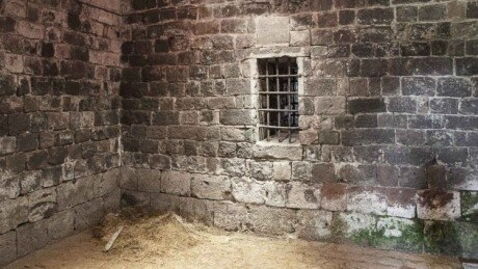History has forgotten them. And yet, an incredible archaeological discovery has unveiled the unsuspected role of these ignored artists in an unprecedented way: copy women.
Discover our latest podcast
In a study published in the Science Advances journal, a team of researchers from the British University of York and the Max Planck Institute in Germany have found, in the mouth of a nun buried in the cemetery of a monastery around the year 1000, traces of ultramarine blue ink.
‘Based on the distribution of the pigment in her mouth, we concluded that the most likely scenario is that she was paining with the pigment and she licked the end of her brush,’ says one of the authors of the work, Monica Tromp, microbioarchaeologist at the Max Planck Institute.
Tiny lapis lazuli pigments
It was in fact mixed in with the dental plaque of the nun that the scientists discovered the ink residues, encrusted in the form of microscopic pigments of a precious mineral: lapis lazuli. ‘[This constitutes] the earliest direct evidence that religious women in Germany used ultramarine blue pigment,’ the authors of the publication argue. And the nature of this pigment is far from being insignificant.
‘We have here a direct proof of a woman, not only painting, but painting with a very rare and expensive pigment, and in a very isolated place,’ says the senior author of the work Christina Warinner, researcher specialised in evolution of microbiomes at the Max Planck Institute. An astonishing finding, since this luxury pigment - extracted in Afghanistan and exported throughout Europe and Asia - was in principle reserved for the most talented copyists and painters. A prestigious status that a woman at that time would not necessarily have had. However this might not be the case!
A role to reconsider
The discovery of these tiny blue pigments have pushed the researchers to completely redefine the preconception of the illumination artists of the Middle Ages. ‘The copy women remain poorly represented in historical writings, and it is likely that a majority of their work as copyists did not get the recognition [they deserved],’ say the researchers in their publication.
‘It makes me wonder how many other artists we could discover in medieval cemeteries - if only we were looking for them,’ concludes Christina Warinner. Thanks to these tiny pigments, a forgotten history is about to be rehabilitated.
Check out the video above for more on this incredible find!
Image source: Getty Images















